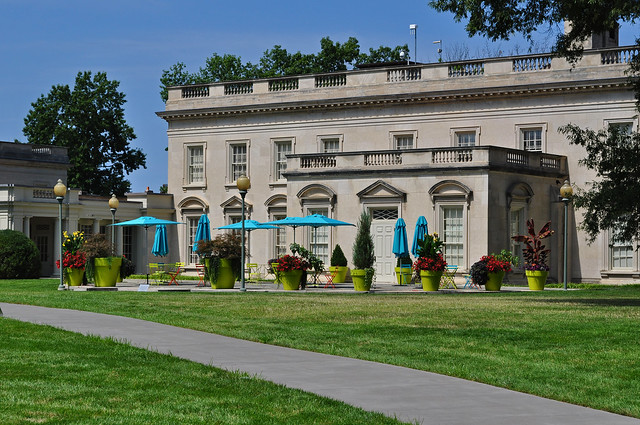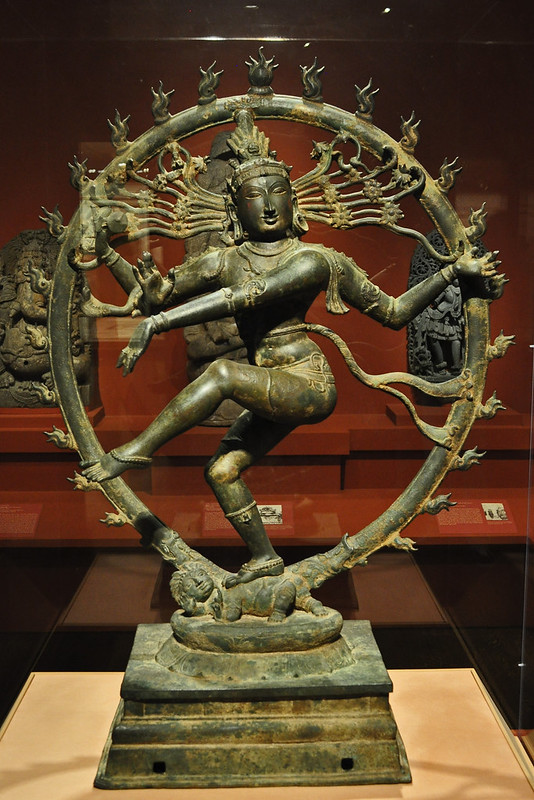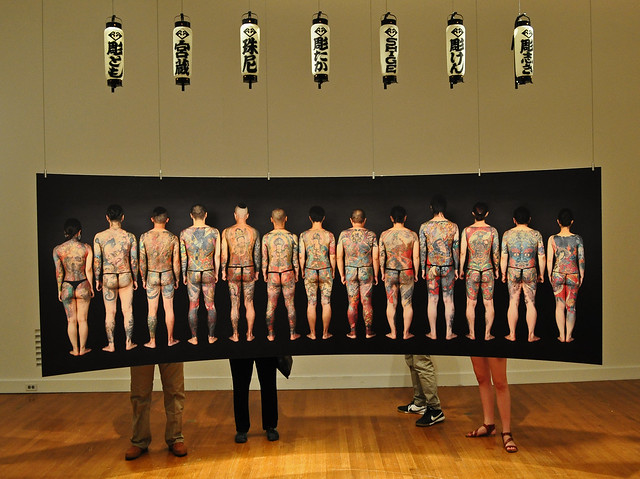Earlier this month, some friends and I left the flatlands, and headed west to Scottsville for a day of tubing on the James River. This is one of my favorite things to do on a late summer day when the water is warm and clear. I wish I could share with you the beauty of the James, but on a total immersion trip like this, carrying anything subject to water damage, such as a camera, is not good idea. Though this didn't stop several members of the nearby and inebriated college crowd from bringing along their own electronic devices to broadcast loud and bad music. I kept wondering if I could hold my breath long enough to swim under water to the noise's source, overturn it, then swim away undetected. I've already made a note to myself to make an earlier departure next time so as to avoid this crowd. Despite this we had a lovely time, and after spending a delightful evening in nearby Charlottesville, we headed back home, but not before stopping at the
Virginia Museum of Fine Arts (VMFA) in Richmond.
Having spent much of my life in Richmond, the museum is familiar to me, or at least it was before its latest, and impressive, renovation.
Underneath and behind the sloping garden above is the new parking garage. What used to be the old parking lot is now the Robins Sculpture Garden, which as a card-carrying treehugger, I think is indeed a better use of any space.
On one side of the garden is a building whose architect was allowed access to the original plans for the White House to use as derivation. Built in 1932, it was, ironically, the Home for Needy Confederate Women. It's last occupants were moved to a nursing home in 1989, and it then became VMFA offices and meeting rooms. The rest of the museum's grounds were once part of a residential complex for poor and disabled Confederate veterans. There has been much talk of relegating all things Confederate to museums, so I guess Richmond has had a head start.
The museum itself has undergone many additions and renovations, the latest one is decidedly modern, and has created much new space. The entrance is now a large atrium that runs through all the museum's floors. At one end is the sculpture garden and restaurants, and at the other is a large leaping hare.
The first thing we saw was a photography exhibition titled
Organic: Photographs of the Natural World. Though I enjoyed the show as a whole, I got stuck on the fact that the title of one of the photographs is
Bellevue Chinese Witch Hazel though it is clearly a loropetalum. Next to the photos was the entrance to the South Asian gallery, where I ran into a childhood memory.
I think I first saw this depiction of a dancing Shiva on one of Miss Greene's 5th grade field trips, and I was fascinated with the statue, and have looked for it on each visit since. On my recent trip it was only one of many things that caught my eye at this wonderful museum.
The museum is free, but we did pay $10 to see the exhibition,
Japanese Tattoo: Perseverance, Art, and Tradition. Though we are both without any ink, my wife and I are somewhat fascinated with tattoos. Even so, I entered the exhibition not thinking I would enjoy it as much as I did. Once you got beyond all the colorful backsides and noticed the details, skill and artistry, it was utterly fascinating.
I recommend the tattoo show, and it is well worth the extra money, but it ends 9/27. There is much more to see at the museum, but we didn't have the time, so a return trip is called for. As usual,
there are more photos available on my Flickr page.


































